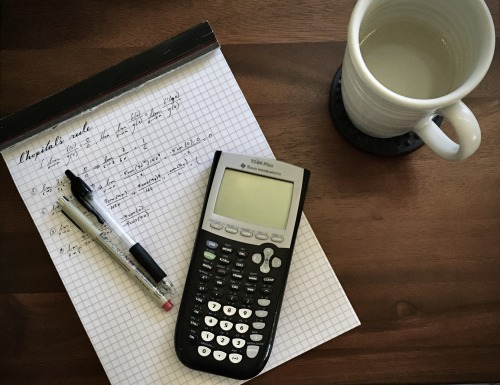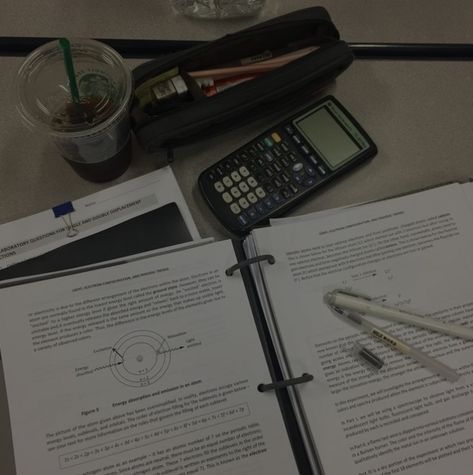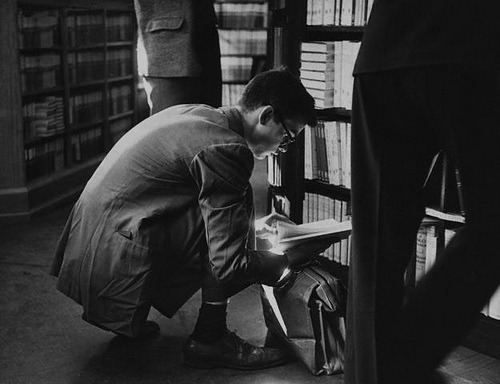Astrorelations - Impetus

More Posts from Astrorelations and Others










'Giant Saucer Stones' Landscape Feature, Boulsworth Hill, Briercliffe, Lancashire.
Albert Einstein teaching at Lincoln, the United State's first Historical Black University, 1946.





the mathematics students
crisp, grey mornings
the scratch of pencil on graph paper
working through complex problems just for the joy of it
baroque era piano music playing in the background
a love of patterns and puzzles
writing out your favorite proofs again and again
advanced math courses, sitting with the upperclassmen
the dusty green of an empty chalkboard
formulas scribbled on your hand in pen
going through a problem again and again until you understand it fully
carefully sketched graphs
short, bitten nails
ice cold water
hands marked with graphite
using math to take apart the world around you
doodling fractals on scratch paper
memorizing digits of pi just to show off to your friends
the moment of clarity when a problem fits together
hair clipped back out of your face
looking for fibonacci sequences in nature
watching a long and complicated equation simplify down to something short and compact
Does time exists?
What is the actual reality of time?
Why does time follows “arrows”?


An Oxford student looking through a book on sale England, 1950




Patreon | Ko-fi
Potential energy is energy debt borrowed from vacuum energy bank
Potential energy is defined as the energy difference between the energy of an object at a current position and the energy of the object at a reference position (generally, infinitely distant position) in a force field.
The gravitational potential energy of a combination of an object with mass M and another object with mass m separated by distance R is expressed by the following formula using the gravitational constant G.

The potential energy is zero when the distance between objects is infinite, and the negative energy increases as the distance decreases by gravity.
Because there can be no negative energy in the real space, potential energy should be considered as fictitious energy. Regarding potential energy as “energy debt” is easy to understand. Then what do objects borrow energy from? The answer is the vacuum space. Potential energy is the energy debt borrowed from “the vacuum energy bank”. An increase in the negative energy means an increase in the energy given by the vacuum space.
Therefore, the law of conservation of energy is established only when the vacuum energy is counted.
When an object is attracted to another object by gravity, a certain amount of energy is given to it from the vacuum space. Hence its energy debt increases by the amount given from the vacuum space, and its momentum energy increases then it accelerates.

On the contrary, when applying a force to an object and moving it against gravity, it returns a certain amount of energy to the vacuum space. Hence the energy debt decreases by the amount returned to the vacuum space, and its momentum energy decreases then it decelerates from the initial speed.

We say “potential energy increases” when the energy debt decreases, but we should say “potential energy decreases”.
Vampire amoeba
-
 astrorelations reblogged this · 4 years ago
astrorelations reblogged this · 4 years ago -
 little-orchid9 reblogged this · 8 years ago
little-orchid9 reblogged this · 8 years ago -
 andres078-blog reblogged this · 8 years ago
andres078-blog reblogged this · 8 years ago -
 staywwweird-blog liked this · 8 years ago
staywwweird-blog liked this · 8 years ago -
 giraffehat liked this · 9 years ago
giraffehat liked this · 9 years ago -
 deoxyribonucleicacid- reblogged this · 9 years ago
deoxyribonucleicacid- reblogged this · 9 years ago -
 carlosmiguellcg reblogged this · 9 years ago
carlosmiguellcg reblogged this · 9 years ago -
 elisayshigh reblogged this · 9 years ago
elisayshigh reblogged this · 9 years ago -
 leda-coria liked this · 9 years ago
leda-coria liked this · 9 years ago -
 digitalxcorpse reblogged this · 9 years ago
digitalxcorpse reblogged this · 9 years ago -
 lovelexi liked this · 9 years ago
lovelexi liked this · 9 years ago -
 nightmarescreation liked this · 9 years ago
nightmarescreation liked this · 9 years ago -
 douchebagmcswagger reblogged this · 9 years ago
douchebagmcswagger reblogged this · 9 years ago -
 mossymooon reblogged this · 9 years ago
mossymooon reblogged this · 9 years ago -
 straightfobia reblogged this · 9 years ago
straightfobia reblogged this · 9 years ago -
 shann1s reblogged this · 9 years ago
shann1s reblogged this · 9 years ago -
 well-dressed-and-band-obsessed reblogged this · 9 years ago
well-dressed-and-band-obsessed reblogged this · 9 years ago -
 hear-me-dear-lucifer reblogged this · 9 years ago
hear-me-dear-lucifer reblogged this · 9 years ago -
 minty0ongi reblogged this · 9 years ago
minty0ongi reblogged this · 9 years ago -
 taylorjensenn4510 reblogged this · 9 years ago
taylorjensenn4510 reblogged this · 9 years ago -
 taylorjensenn4510 liked this · 9 years ago
taylorjensenn4510 liked this · 9 years ago -
 crazzy-vib3z reblogged this · 9 years ago
crazzy-vib3z reblogged this · 9 years ago -
 squiddinkk liked this · 9 years ago
squiddinkk liked this · 9 years ago -
 sshaark reblogged this · 9 years ago
sshaark reblogged this · 9 years ago -
 empty-union reblogged this · 9 years ago
empty-union reblogged this · 9 years ago -
 darkpaleglow liked this · 9 years ago
darkpaleglow liked this · 9 years ago -
 878sam reblogged this · 9 years ago
878sam reblogged this · 9 years ago -
 east----coast-blog reblogged this · 9 years ago
east----coast-blog reblogged this · 9 years ago -
 east----coast-blog liked this · 9 years ago
east----coast-blog liked this · 9 years ago -
 deoxyribonucleicacid- reblogged this · 10 years ago
deoxyribonucleicacid- reblogged this · 10 years ago -
 the-perks-of-being-bethan liked this · 10 years ago
the-perks-of-being-bethan liked this · 10 years ago -
 acidicceyes reblogged this · 10 years ago
acidicceyes reblogged this · 10 years ago -
 we-could-l0ve liked this · 10 years ago
we-could-l0ve liked this · 10 years ago -
 paigeelouisee reblogged this · 10 years ago
paigeelouisee reblogged this · 10 years ago -
 temperqueen liked this · 10 years ago
temperqueen liked this · 10 years ago -
 universal-sea reblogged this · 10 years ago
universal-sea reblogged this · 10 years ago -
 universal-sea liked this · 10 years ago
universal-sea liked this · 10 years ago -
 yousaidyouwouldnt-leave reblogged this · 10 years ago
yousaidyouwouldnt-leave reblogged this · 10 years ago -
 official-fangirl101 liked this · 10 years ago
official-fangirl101 liked this · 10 years ago
